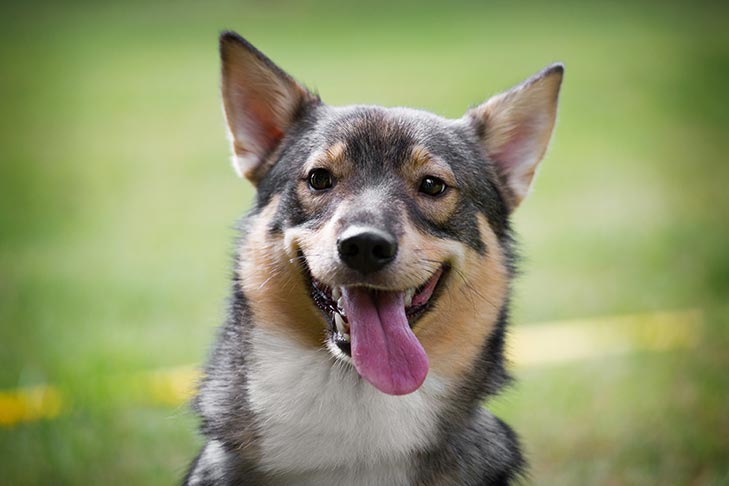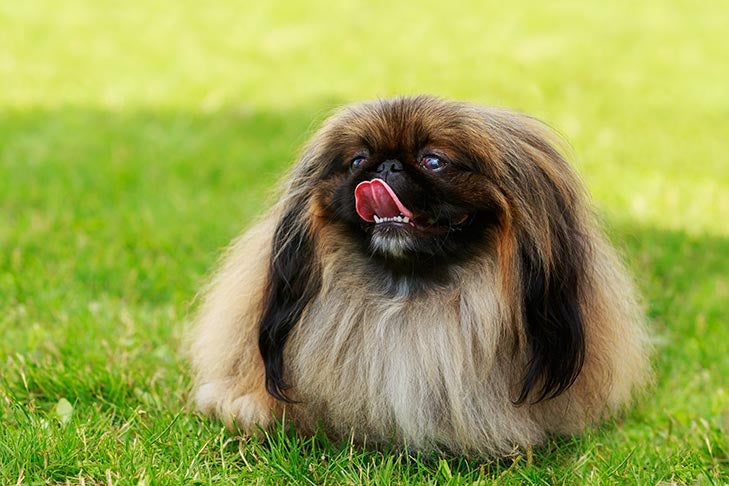As a dog owner, you may be used to seeing your canine companion pant in warm weather, but do dogs sweat? Contrary to popular belief, dogs do sweat, but sweating is only a small part of the process they use to cool themselves down.
How Do Dogs Sweat?
There’s a reason why you’ve never seen your dog sweat in the same way you do, and that’s because dogs only produce sweat in certain parts of their bodies. Dogs have two types of sweat glands:
- Merocrine glands
- Apocrine glands
Merocrine sweat glands function similarly to human sweat glands. These glands are located in your dog’s paw pads and activate when he is hot to cool him down. This is why you might notice damp paw prints on the ground during particularly hot days. Most dogs are covered in fur, so if sweat glands were located on their bodies, the sweat would fail to evaporate – and when sweat evaporates, that’s when cooling takes place. That’s why it is much more efficient for dogs to have sweat glands in their paw pads, where there is little fur.
Apocrine sweat glands are different from merocrine glands. While veterinarians consider aporcrine glands to be sweat glands, their main purpose is to release pheromones, not cool your dog off. These glands are located all over every dog’s body, and they help a dog identify other dogs by scent.

What’s the Point of Panting?
Sweat plays a very small role in cooling down your dog. Dogs rely on panting to control most of their temperature regulation. When dogs pant, they evaporate moisture from their tongues, nasal passages, and the lining of their lungs, cooling themselves as air passes over the moist tissue.
They also rely on vasodilation to help them cool off, which is the expansion of blood vessels, especially in their ears and face. When the blood vessels expand, they bring the hot blood closer to the surface of the skin, which allows it to cool down before returning to the heart and helps regulate an animal’s internal body temperature.
Does Fur Make Dogs Hot?
Your dog’s coat actually acts as an insulator. A dog’s coat captures air to keep out the cold and hold heat in during winter, and to keep your dog cooler in hot weather,” explains Dr. Jerry Klein, AKC chief veterinary officer.
“This is why you should not shave a double-coated breed. The inner coat, which is shed regularly, is also the dog’s insulating coat. Shaving that coat to reduce shedding or supposedly to keep the dog cool, also eliminates that insulating layer of fur and makes the dog susceptible to heat stroke and can result in improper hair growth and the possibility of follicle damage.”
Heat Stroke in Dogs
Unfortunately, panting, vasodilation, and limited sweating are not as effective in cooling dogs down as sweating is for humans. This poses risks for dogs, ranging from heat stress and heat exhaustion to heat stroke.
Heat stroke is a serious concern for all dogs, but Dr. Klein warns that it is especially dire for brachycephalic breeds that have a short nose and flat face, such as Pugs, Boxers, Bulldogs, Boston Terriers, and French Bulldogs. Due to their unique anatomy, these breeds are not able to cool themselves as efficiently as other breeds because of inefficient breathing and panting. Dogs that have had heat stroke before, obese dogs, and those with dark coats are also at higher risk for heat stroke.

Heat stroke occurs when a dog’s body temperature rises and he overheats, and if left untreated for too long it can be fatal. Every dog owner should be aware of the signs of heat stress and heat stroke. Here are some of them:
- Heavy, frantic panting
- Dehydration
- Body temperature over 41° Celsius (feels warm to the touch)
- Excessive drooling
- Bright red gums
- Rapid or irregular heart rate
- Vomiting
- Seizures
- Muscle tremors
- Lack of coordination (ataxia)
- Unconsciousness
If you suspect that your dog is suffering from heat stroke or heat stress, remove him from the heat and call your veterinarian immediately. You will need to take him to an animal hospital, but in the meantime, you can run cool water on him from a hose, in the bathtub, or put a soaked towel on his body. Always keep his head elevated and out of the water. Also, give him some cool water to drink.
Keeping Your Dog Cool
We might not be able to make our dogs sweat, but we can help them regulate their body temperature by controlling their environment. If your dog is spending time outdoors, make sure he has access to shade and plenty of clean water at all times. You may not think it’s that hot, but your dog has a fur coat and may have an energy level that keeps him chasing a ball no matter how high the temperature. Also, keep an eye on the temperature inside your house to ensure that it’s cool enough for your pets. Never leave your dog unattended in a car, even for a few minutes, as temperatures inside a vehicle can quickly climb to dangerous levels.
Don’t exercise your dog when it’s too hot outside – instead do it very early in the morning or wait until the end of the day. If you’ve been out playing fetch, carry the ball back home for your pup, so he’ll be better able to pant well and cool himself off.
You can also purchase a cooling vest to keep your dog comfortable for longer.
By learning how dogs regulate their body temperature, you can help keep them stay cool, safe, and healthy year-round.
The post Do Dogs Sweat? appeared first on American Kennel Club.



0 Comments
Recommended Comments
There are no comments to display.